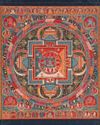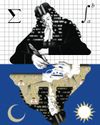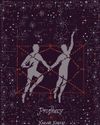
As jubilant as these intricate costume-objects are, they also suggest protective gear for vulnerable bodies. For Cave, fashion design and art are united by activism: he made the first “Soundsuit” in 1991, in response to the beating of Rodney King by the L.A.P.D. The Guggenheim shows a selection of the artist’s polyphonic sculptures, videos, and installations in the retrospective “Nick Cave: Forothermore.” (Opens Nov. 18.)
According to Mayan mythology, the world was created in 3114 B.C. and overseen by a vast pantheon of deities, from jaguar protectors of the night to the eternally young god of maize, worshipped in lands known today as Guatemala, Honduras, and Mexico. The Met’s blockbuster “Lives of the Gods: Divinity in Maya Art” features a hundred treasures—in limestone, ceramic, jadeite, obsidian—dating from 250 to 900 A.D. (Opens Nov. 21.)
Esta historia es de la edición November 14, 2022 de The New Yorker.
Comience su prueba gratuita de Magzter GOLD de 7 días para acceder a miles de historias premium seleccionadas y a más de 9,000 revistas y periódicos.
Ya eres suscriptor ? Conectar
Esta historia es de la edición November 14, 2022 de The New Yorker.
Comience su prueba gratuita de Magzter GOLD de 7 días para acceder a miles de historias premium seleccionadas y a más de 9,000 revistas y periódicos.
Ya eres suscriptor? Conectar

MEAN TIME
“Hard Truths.”

ENLIGHTEN ME
The secret beauty of mandalas.

THE BEST OF THEM
His was a genius for the ages. Will Gottfried Leibniz ever get his due?

DEATH CULT
Yukio Mishima’ tortured obsessions were his making—and his unmaking.

Prophecy
The night of Dev’s twenty-second birthday, he was invited to sit with the elders after dinner.

A TALE OF TWO DISTRICTS
Lauren Boebert and Colorado’s red-blue divide.

THE TIKTOK TRAIL
Andean migrants draw others to the U.S. with videos depicting themselves as living the American Dream.

LOVE AND THEFT
Did a best-selling romantasy novelist steal another writer's story?

OUR NEW TWO-FACTOR AUTHENTICATION SYSTEM
Our two-factor authentication system is expanding because text messages and e-mailed codes are becoming less secure. Also, we’re committed to making sure your log-in process is more of a hassle than it needs to be.

STILL PROCESSING
Why is the American diet so deadly?